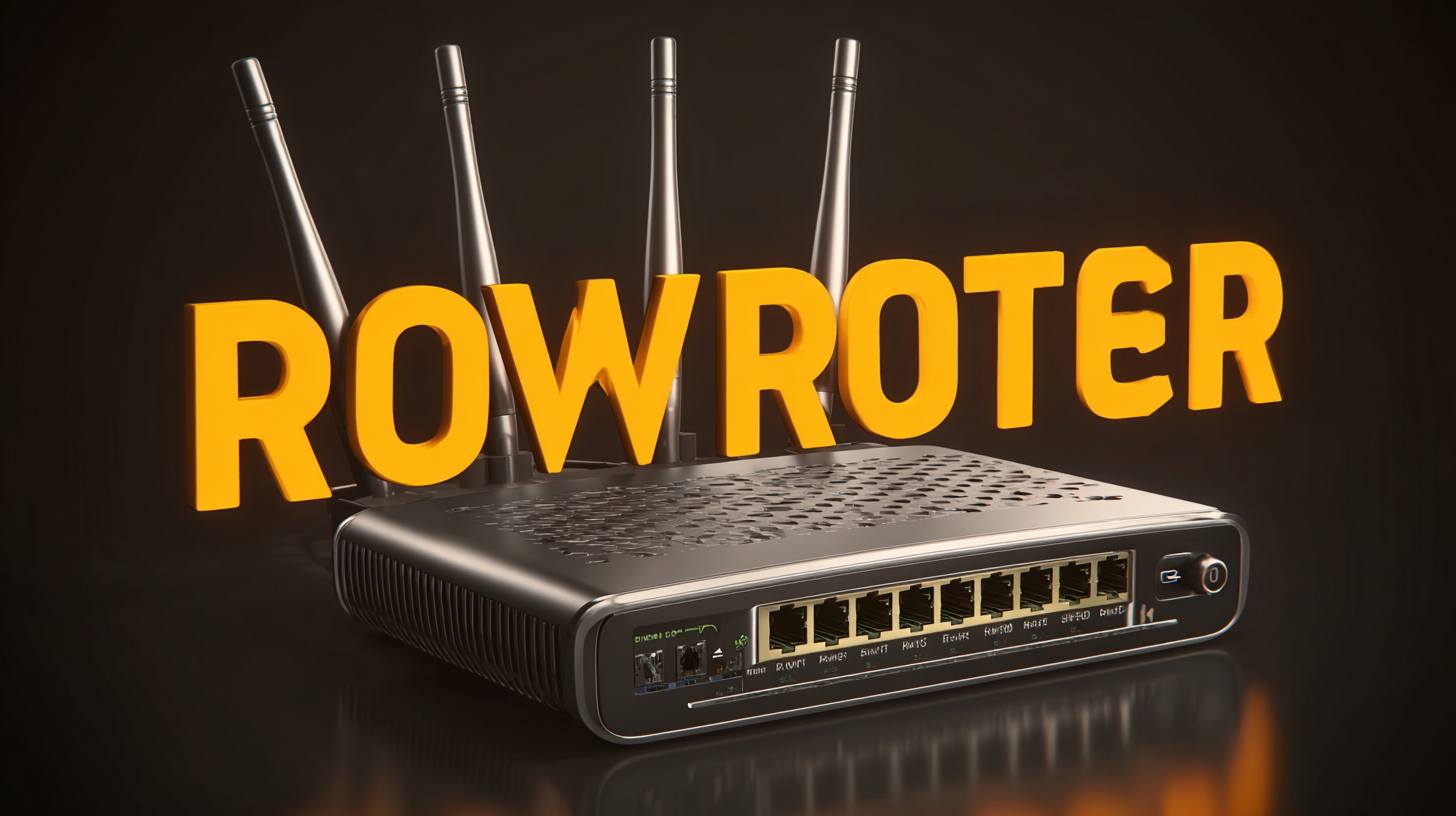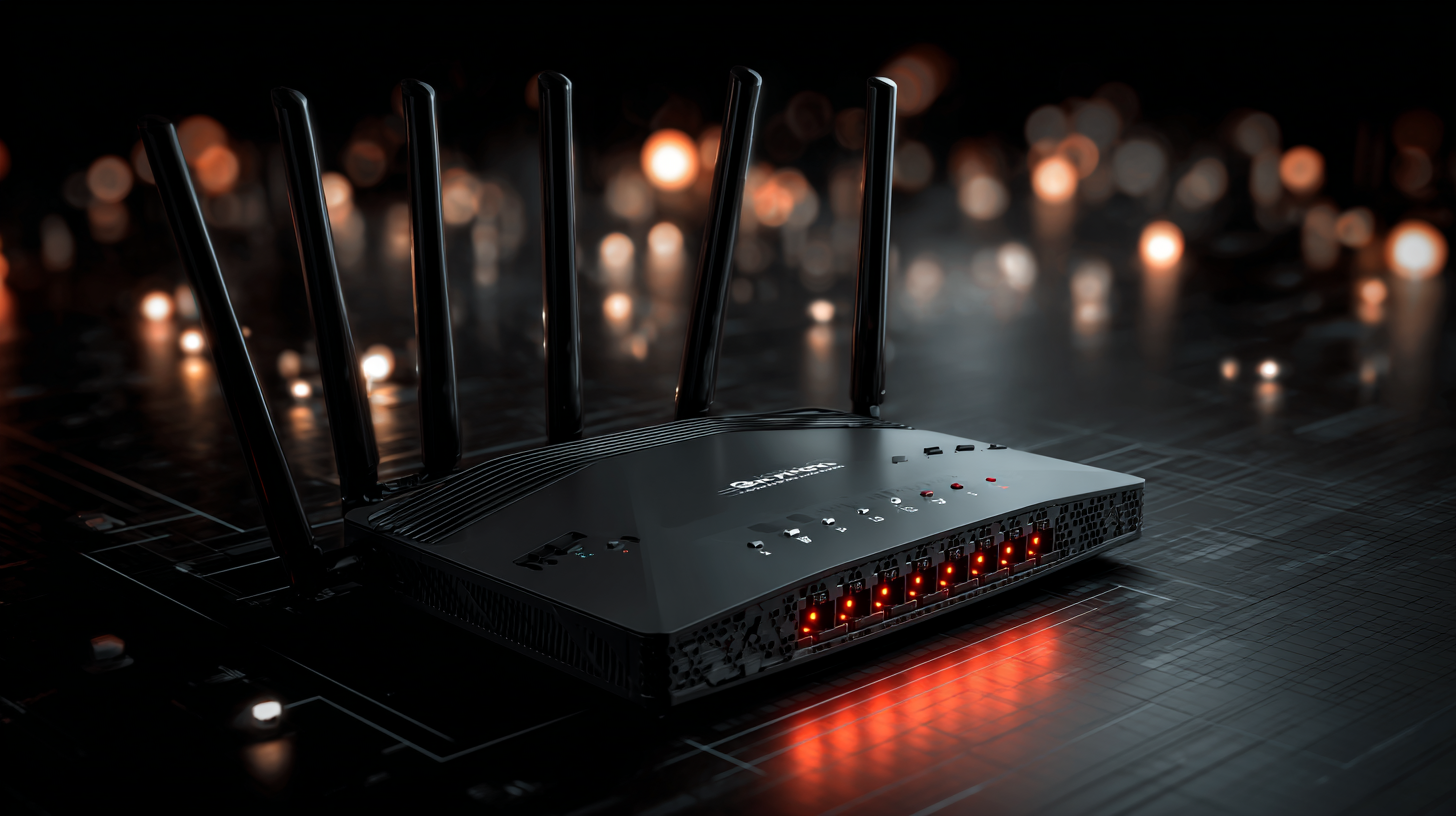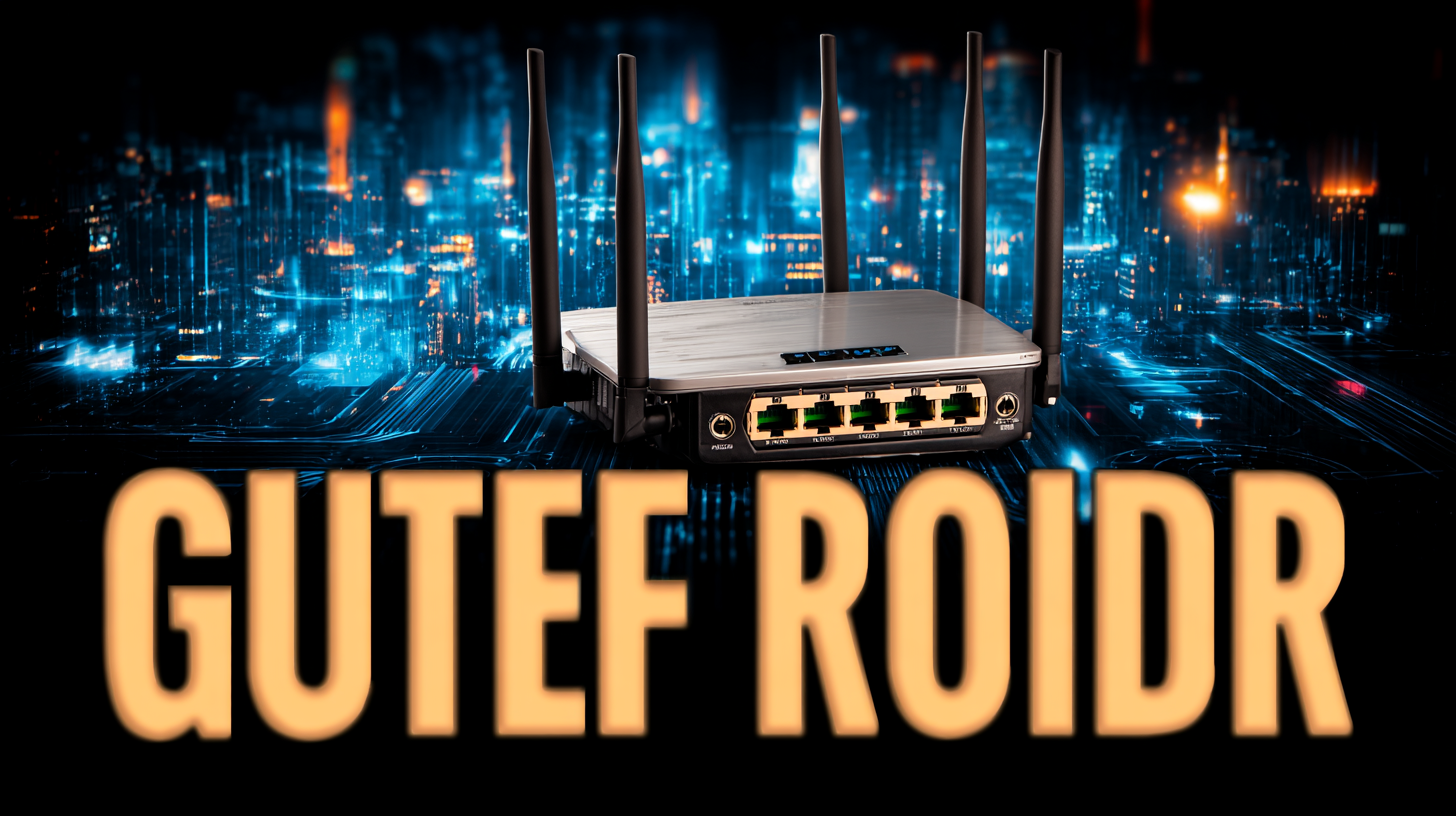In today's digital age, a reliable network router is crucial for both personal and professional connectivity, especially as a recent report by the International Data Corporation (IDC) revealed that global internet traffic is expected to reach 4.8 zettabytes per year by 2022. With the proliferation of smart devices and the increasing demand for high-speed internet, selecting the right network router has become more essential than ever. According to market research from Statista, the global market for network routers is projected to grow to over 25 billion U.S. dollars by 2026, underscoring the importance of investing in quality technology that meets your specific needs.

In this ultimate guide, we will provide you with a comprehensive checklist to help you choose the best network router to enhance your internet experience, ensuring that you stay connected seamlessly in a fast-paced, data-driven world.
When choosing the best network router for your needs, it's essential to understand the variety of available types and their specific functions. Routers can be categorized into several groups based on their application, features, and performance capabilities. For instance, general-purpose routers are designed for everyday home use, providing essential connectivity for smart devices and personal computers. On the other hand, router solutions tailored for specific applications, such as smart home systems or industrial monitoring, come equipped with specialized protocols and enhanced security measures.
As the global router market continues to expand, projected to reach $54.4 billion in 2024, the demand for devices that support the latest technologies like Wi-Fi 6 and IPv6 has surged. Modern routers must not only meet the basic requirements of connectivity but also offer robust security features to protect against vulnerabilities. Research has indicated that numerous popular routers harbor significant security flaws, highlighting the importance of selecting a device from reputable manufacturers that prioritize regular updates and enhancements. Understanding these aspects will empower consumers to make informed decisions when investing in a network router that aligns with their unique needs and expectations.
When choosing a network router, several key features are essential to ensure you meet your specific needs. First and foremost, consider the speed capabilities of the router. According to a report by the FCC, most households require a minimum speed of 25 Mbps for effective streaming and gaming. Routers come with different standards, such as 802.11ac or the newer 802.11ax (Wi-Fi 6), which can deliver significantly higher speeds and better overall performance in busy environments.
Another critical feature to look out for is range and coverage. The placement of your router and the type of antennas it has can significantly impact the Wi-Fi signal throughout your home. A 2022 study from the Wi-Fi Alliance indicates that routers with beamforming technology can enhance signal strength by focusing the Wi-Fi signal directly to connected devices rather than broadcasting in all directions.
**Tip:** Always choose a router that supports your internet plan’s speed to avoid bottlenecks, and consider investing in a dual-band or tri-band router if you have multiple devices connected simultaneously.
Security features should also be top of mind; with a reported rise of 36% in cyberattacks targeting home networks since 2020, ensuring your router has WPA3 encryption and automatic firmware updates can help protect your personal data.
**Tip:** Regularly check for firmware updates from your router's manufacturer to keep your network secure against emerging threats.
| Feature | Description | Importance | Considerations |
|---|---|---|---|
| Speed | The maximum data transfer rate of the router, often measured in Mbps or Gbps. | High | Choose based on your internet plan and number of devices. |
| Coverage Area | The range within which the Wi-Fi signal is effective. | High | Consider the size of your home and presence of obstacles. |
| Security Features | Options like WPA3 encryption, firewall capabilities. | Very High | Look for the latest security protocols to protect your network. |
| Number of Ports | Count of Ethernet ports available for wired connections. | Medium | Consider the number of wired devices you want to connect. |
| Dual-Band vs Tri-Band | The ability to broadcast on multiple frequency bands for less interference. | High | Tri-band routers may benefit larger households with many devices. |
| Quality of Service (QoS) | Allows prioritization of bandwidth for certain applications or devices. | Medium | Useful for gaming or streaming without interruptions. |
| Management Features | Options like mobile app control, remote management, etc. | Medium | Consider how comfortable you are with technology. |
When choosing between wireless and wired routers, it's crucial to assess your specific needs and usage scenarios. According to a report by the International Data Corporation (IDC), approximately 70% of households rely on wireless networks for day-to-day activities. Wireless routers offer the convenience of mobility, enabling multiple devices to connect without cumbersome cables. This is particularly beneficial for households with smart devices and homes that require flexibility in network access. However, the trade-off lies in potential connectivity issues and reduced speeds, especially in larger spaces or environments with many obstructions.
In contrast, wired routers have consistently been recognized for their superior speed and stability. A study from Speedtest Global Index indicates that wired connections can deliver up to 8 times faster speeds than their wireless counterparts under optimal conditions. For users who prioritize gaming, streaming high-definition content, or operating critical business applications, opting for a wired solution may prove advantageous. By understanding the performance metrics associated with both types of routers, you can make an informed decision that aligns with your internet usage patterns and requirements.
 When selecting the best network router for your needs, assessing your internet speed requirements is crucial. First, consider the type of online activities you engage in daily. If you primarily browse webpages and check emails, a basic router may suffice. However, for households that stream high-definition videos, play online games, or run multiple smart devices, a higher speed capability is essential. Understanding the average bandwidth each of your activities consumes can significantly impact your router choice. For example, streaming HD content typically requires 5 Mbps per stream, while online gaming can demand 3-6 Mbps.
When selecting the best network router for your needs, assessing your internet speed requirements is crucial. First, consider the type of online activities you engage in daily. If you primarily browse webpages and check emails, a basic router may suffice. However, for households that stream high-definition videos, play online games, or run multiple smart devices, a higher speed capability is essential. Understanding the average bandwidth each of your activities consumes can significantly impact your router choice. For example, streaming HD content typically requires 5 Mbps per stream, while online gaming can demand 3-6 Mbps.
Secondly, it’s important to evaluate the speed your internet service provider (ISP) offers. Most ISPs provide various packages, each with different speed limits. Once you know your maximum available speed, you can select a router that not only meets but exceeds this requirement. This ensures optimal performance, especially during peak usage times when multiple devices are active. By aligning your router selection with your household’s internet speed needs, you can enhance your overall online experience, reducing lag and buffering while accommodating all your devices effortlessly.
When choosing a network router, budget-conscious shoppers should consider several key factors that can significantly impact both performance and cost. According to recent industry reports, the average lifespan of a router is about three to five years, meaning consumers should be mindful of not only the initial price but also potential future upgrades.

A comparison of leading brands reveals that while high-end models may offer advanced features like beamforming and MU-MIMO technology, more affordable options also provide satisfactory performance for common household needs. Reports indicate that mid-range routers can handle multiple devices and streaming activities efficiently while remaining under the $100 mark. For shoppers looking for a balance between performance and cost, options from lesser-known brands may provide better value without sacrificing essential features such as dual-band connectivity and basic parental controls.
Additionally, analyzing market trends shows that many consumers are increasingly leaning towards Wi-Fi 6 routers, which promise significantly improved speed and connectivity. As data from the latest surveys indicates, nearly 40% of shoppers are prioritizing these models for their enhanced capacity to handle multiple devices and improved range. Overall, being informed about the market landscape allows budget-conscious consumers to make choices that align with their specific network needs without overspending.


